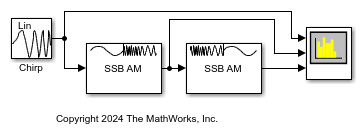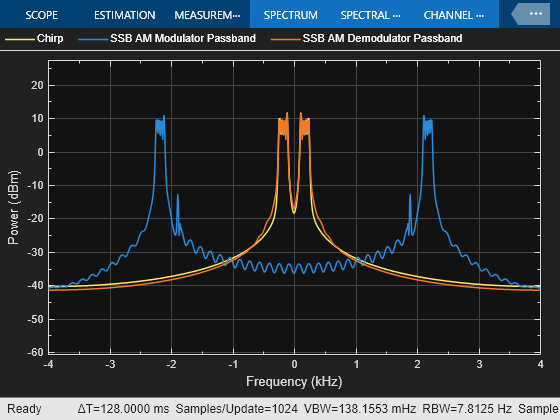SSB AM Modulator Passband
Modulate using single-sideband amplitude modulation
Libraries:
Communications Toolbox /
Modulation /
Analog Passband Modulation
Description
The SSB AM Modulator Passband block modulates a signal using single-sideband amplitude modulation with a Hilbert transform filter. Both the input and output signals are real scalar signals.
Examples
Limitations
This block does not work inside a triggered subsystem.
Ports
Input
Output
Parameters
Block Characteristics
Data Types |
|
Multidimensional Signals |
|
Variable-Size Signals |
|
Algorithms
References
[1] Peebles, Peyton Z, Jr. Communication System Principles. Reading, MA: Addison-Wesley, 1976.
Extended Capabilities
Version History
Introduced before R2006a



